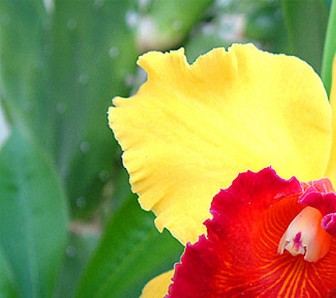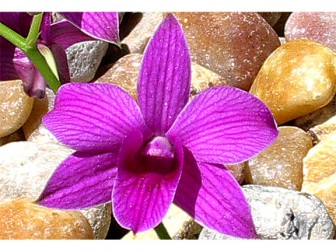Many ornamental plants have the reputation of being hard to care for. Orchids are one of them. The truth is, orchids are no harder to grow and take care of than other flowering plants. All it takes is a little understanding of their habitat and nutritional requirements. Here are the basics on how to care for tropical orchids.
1. Be aware of the orchid’s natural habitat. The most common tropical orchids are the Dendrobiums (about 1,200 species), Vandas (about 50 species), Cattleyas (more than 40 species) and Oncidiums (more than 300 species). Some species are terrestrial (grow on regular soil), but the majority are epiphytic (grow on trees) or lithophytic (grow on rocks) which makes their care requirements unique. Their native habitats are diverse, but most of them come from the humid tropical rain forests of Asia, Australia and South America.
2. Provide bright light but avoid too much direct exposure to sunlight. Being natives of rain forests and mostly growing under the canopy of trees, orchids appreciate light but not direct sunlight. Vandas, because they have small leaves, require the strongest light, tolerating south-facing exposure with about 30 per cent shade. Dendrobiums, Cattleyas and Oncidiums prefer shadier or morning sun (east-facing) locations.

3. Provide water and moisture but avoid soaking wet conditions. Orchids thrive in high humidity (50 to 75 per cent), but it doesn’t mean they want to be constantly wet. Water orchids only when the soil or growing medium is dry to the touch. Aside from the Vandas that demand damp conditions and moisture levels up to 80 per cent, the majority of epiphytic and lithophytic orchids prefer to be totally dry in between waterings. Leaving orchids constantly soaked leads to root rot, disease and various fungal problems. Humidity can be raised by misting and placing orchid planters on top of pebbles resting on a water basin.

4. Provide air movement. Orchids’ natural habitats are high among tree branches where there is much air current. This natural ventilation helps keep their roots dry and free from moisture-loving pests. Hang orchids in well-ventilated areas, but remember that too much wind leads to dryness and more frequent watering.
5. Fertilize often but in moderation. Use formulas specific for orchids. If using regular all-purpose fertilizers, dilute to half the prescribed strength and apply weekly instead of every two weeks.
6. Strive to learn more about particular requirements of specific orchid species. Read books or go online for detailed information on how to best care for your favorite tropical orchids.
(Adapted from ehow)









